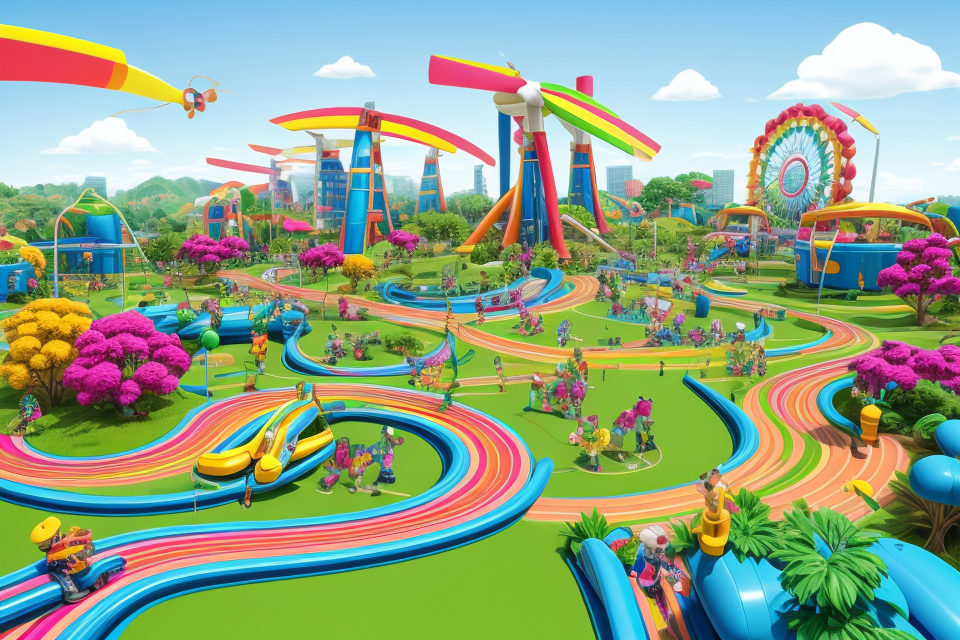
The energy game is a term used to describe the complex and ever-changing landscape of the global energy industry. It encompasses the production, distribution, and consumption of energy resources, including fossil fuels, nuclear power, and renewable energy sources. As the world population continues to grow and urbanize, demand for energy is expected to increase, leading to greater competition for resources and increased pressure on governments and businesses to develop sustainable energy solutions. Understanding the energy game is crucial for individuals, communities, and countries looking to secure their energy future and reduce their environmental impact. In this article, we will explore the key players, strategies, and challenges involved in the energy game, and provide insights on how you can participate in shaping the future of energy.
The Energy Game is a popular online game that simulates the production and consumption of energy resources in a country or region. Players must manage their energy resources to meet the demands of their citizens while also maintaining a sustainable energy mix. To play the game, players must build power plants, renewable energy sources, and infrastructure to transport energy, while also balancing the costs of production and the environmental impact of their choices. The Energy Game is a fun and educational way to learn about energy policy and sustainability.
What is the Energy Game?
Understanding the Concept
The Energy Game is a complex, strategic simulation that aims to educate players about the intricacies of energy production and consumption. This game is designed to provide players with a comprehensive understanding of the global energy landscape, the challenges it faces, and the potential solutions that can be implemented to mitigate these challenges.
In this game, players assume the role of energy sector decision-makers, tasked with navigating the complex web of energy production, distribution, and consumption. The objective of the game is to strike a balance between meeting the energy demands of a growing population, ensuring energy security, and minimizing the environmental impact of energy production.
Key Aspects and Objectives
The Energy Game is a multi-layered simulation that encompasses various aspects of the energy sector, including:
- Energy production: Players must decide on the optimal mix of energy sources, such as fossil fuels, nuclear, and renewable energy sources, to meet the growing energy demands of their virtual countries.
- Energy distribution: Players must develop and maintain an extensive network of power plants, transmission lines, and distribution systems to ensure a stable and reliable energy supply.
- Energy efficiency: Players must also focus on improving energy efficiency, encouraging the adoption of renewable energy sources, and promoting energy conservation measures to reduce energy waste.
- Environmental impact: Players must balance the need for energy security with the environmental consequences of energy production, such as greenhouse gas emissions and pollution.
Comparison to Other Popular Games
The Energy Game can be compared to other popular strategy games, such as SimCity and Civilization, in that it requires players to make strategic decisions and manage complex systems. However, unlike these games, the Energy Game is focused specifically on the energy sector, providing players with a unique and immersive experience that highlights the challenges and opportunities in this critical area.
How to Play the Energy Game
Setting Up the Game
- Preparing the game board: The game board represents the energy market and should be set up in a clear space. The board should include spaces for players to buy and sell energy sources, as well as spaces for energy storage facilities and other game components.
- Choosing a starting player: The starting player is chosen randomly or through a predetermined method, such as rolling a dice or flipping a coin.
- Setting up energy sources and other game components: Each player is given a set amount of energy sources, such as oil, coal, wind, or solar power, to start the game. Players can also purchase additional energy sources throughout the game using in-game currency. Other game components, such as energy storage facilities or upgrades, can also be set up at the beginning of the game.
Gameplay Mechanics
- Player turn structure: Players take turns in a predetermined order, with each player having a set amount of time to make their moves.
- Collecting and using energy sources: Players collect energy sources by buying them from other players or through energy production facilities on the game board. Energy sources can be used to power buildings or other game components, or to generate income.
- Strategies for maximizing points: Players can use various strategies to maximize their points, such as investing in renewable energy sources, diversifying their energy portfolio, or optimizing their energy production and storage.
- Managing risks and uncertainties: The energy market is subject to risks and uncertainties, such as fluctuating energy prices or unexpected events. Players must manage these risks and uncertainties by diversifying their energy sources, investing in risk management strategies, or using hedging techniques.
Winning the Energy Game
- Reaching the end game: The game ends after a predetermined number of rounds or when all players have reached a certain level of energy consumption or production.
- Final scoring and victory conditions: The final score is calculated based on the player’s energy production, consumption, income, and other factors. The player with the highest score at the end of the game is declared the winner.
- Strategies for winning the game: Players can use various strategies to win the game, such as investing in the most profitable energy sources, optimizing their energy production and storage, or managing risks and uncertainties effectively.
Tips and Tricks for Playing the Energy Game
Maximizing Points
- Best practices for collecting and using energy sources: The first step in maximizing points in the Energy Game is to understand the various energy sources available and how to best collect and use them. This may include developing a strategy for harnessing renewable energy sources such as solar or wind power, or investing in fossil fuels to ensure a steady supply of energy.
- Optimal strategies for scoring points: In addition to collecting and using energy sources effectively, it is important to have a clear understanding of the scoring system and how to maximize points. This may involve identifying opportunities to increase energy efficiency, investing in technologies that improve energy storage and distribution, or finding ways to reduce energy waste.
- Tactics for outmaneuvering opponents: In a competitive Energy Game, it is important to stay one step ahead of opponents. This may involve developing a strategy for disrupting the energy supply of competitors, investing in technologies that provide a competitive advantage, or identifying new energy sources before opponents have the chance to do so.
Minimizing Risks
- Strategies for managing uncertainties and risks: The Energy Game is subject to a number of uncertainties and risks, including fluctuations in energy prices, natural disasters, and changes in government policies. To minimize risks, it is important to develop a strategy for managing these uncertainties and risks, such as diversifying energy sources, investing in risk mitigation technologies, or hedging against price fluctuations.
- Minimizing the impact of setbacks and challenges: Despite best efforts, setbacks and challenges are inevitable in the Energy Game. To minimize their impact, it is important to have a contingency plan in place, such as developing alternative energy sources or investing in technologies that improve energy efficiency and reduce waste.
- Balancing risk and reward: Finally, it is important to balance risk and reward when playing the Energy Game. This may involve taking calculated risks to maximize returns, or investing in long-term strategies that may not pay off immediately but offer greater rewards in the long run.
The Importance of Energy in the Real World
Energy in Our Daily Lives
Energy is an essential component of our daily lives, as it powers almost every aspect of modern society. From the electricity that powers our homes and devices to the fuel that propels our vehicles, energy is an integral part of our daily routines. However, the way we generate and use energy has a significant impact on our environment and health.
One of the primary concerns surrounding energy use is its impact on the environment. The burning of fossil fuels, such as coal and oil, releases harmful pollutants into the air, contributing to climate change and other environmental issues. Renewable energy sources, such as solar and wind power, offer a cleaner alternative to traditional energy sources, but they still have their own environmental impacts. For example, the production of solar panels and wind turbines requires significant amounts of energy and resources, and their disposal can also be problematic.
In addition to environmental concerns, energy use also has an impact on our health. Air pollution from the burning of fossil fuels can lead to respiratory problems and other health issues, while the use of nuclear power poses risks to human health and safety. The development and use of new energy technologies must take these health and safety concerns into account.
The Future of Energy
As the world’s population grows and urbanizes, demand for energy is expected to increase significantly in the coming decades. To meet this demand, we must explore new energy sources and technologies that are more sustainable and efficient. Emerging trends in energy include the development of renewable energy sources such as solar and wind power, as well as advances in energy storage and distribution.
However, there are also potential challenges and opportunities associated with these new energy technologies. For example, the deployment of renewable energy sources requires significant investment in infrastructure, and their intermittent nature can make them difficult to integrate into the existing energy grid. Additionally, the transition to a low-carbon economy will require significant changes to the way we produce and consume energy, which will have implications for the economy and jobs.
Ultimately, the future of energy is shaped by a complex interplay of technological, economic, and political factors. By understanding these factors and making informed choices about energy policy and investment, we can help shape a more sustainable and equitable energy future.
FAQs
1. What is the Energy Game?
The Energy Game is a simple and fun way to learn about energy sources, their impact on the environment, and how they can be used in different ways. The game is designed to be educational and interactive, making it an engaging way to learn about energy.
2. How do you play the Energy Game?
To play the Energy Game, you will need a set of cards that represent different energy sources, such as solar, wind, coal, and oil. Each card will have information on the pros and cons of using that particular energy source, as well as its impact on the environment. To start the game, players will shuffle the cards and deal them out among the players. Each player will then take turns playing a card from their hand, explaining why they chose that particular energy source and how it can be used. The game continues until all the cards have been played.
3. What are the rules of the Energy Game?
The rules of the Energy Game are simple. Each player takes turns playing a card from their hand, explaining why they chose that particular energy source and how it can be used. Players can also challenge each other’s cards if they believe they have made an incorrect statement or if they believe the card is not a valid energy source. The game continues until all the cards have been played.
4. How does the Energy Game help players learn about energy?
The Energy Game helps players learn about energy by providing them with a hands-on, interactive way to explore different energy sources and their impact on the environment. By playing the game, players can see the pros and cons of each energy source and make informed decisions about which ones to use. The game also encourages players to think critically about energy and how it can be used in different ways.
5. What are some examples of energy sources included in the Energy Game?
The Energy Game includes a variety of energy sources, such as solar, wind, coal, oil, hydroelectric, and geothermal. Each card will have information on the pros and cons of using that particular energy source, as well as its impact on the environment. For example, solar energy is a renewable resource that does not produce greenhouse gas emissions, but it is not always available in cloudy or rainy weather. Coal, on the other hand, is a non-renewable resource that produces a lot of greenhouse gas emissions, but it is readily available and relatively cheap.
6. Who can play the Energy Game?
Anyone can play the Energy Game! It is designed to be educational and interactive, making it an engaging way to learn about energy for people of all ages. Whether you are a student, a teacher, or just someone who is interested in learning more about energy, the Energy Game is a fun and informative way to do so.







